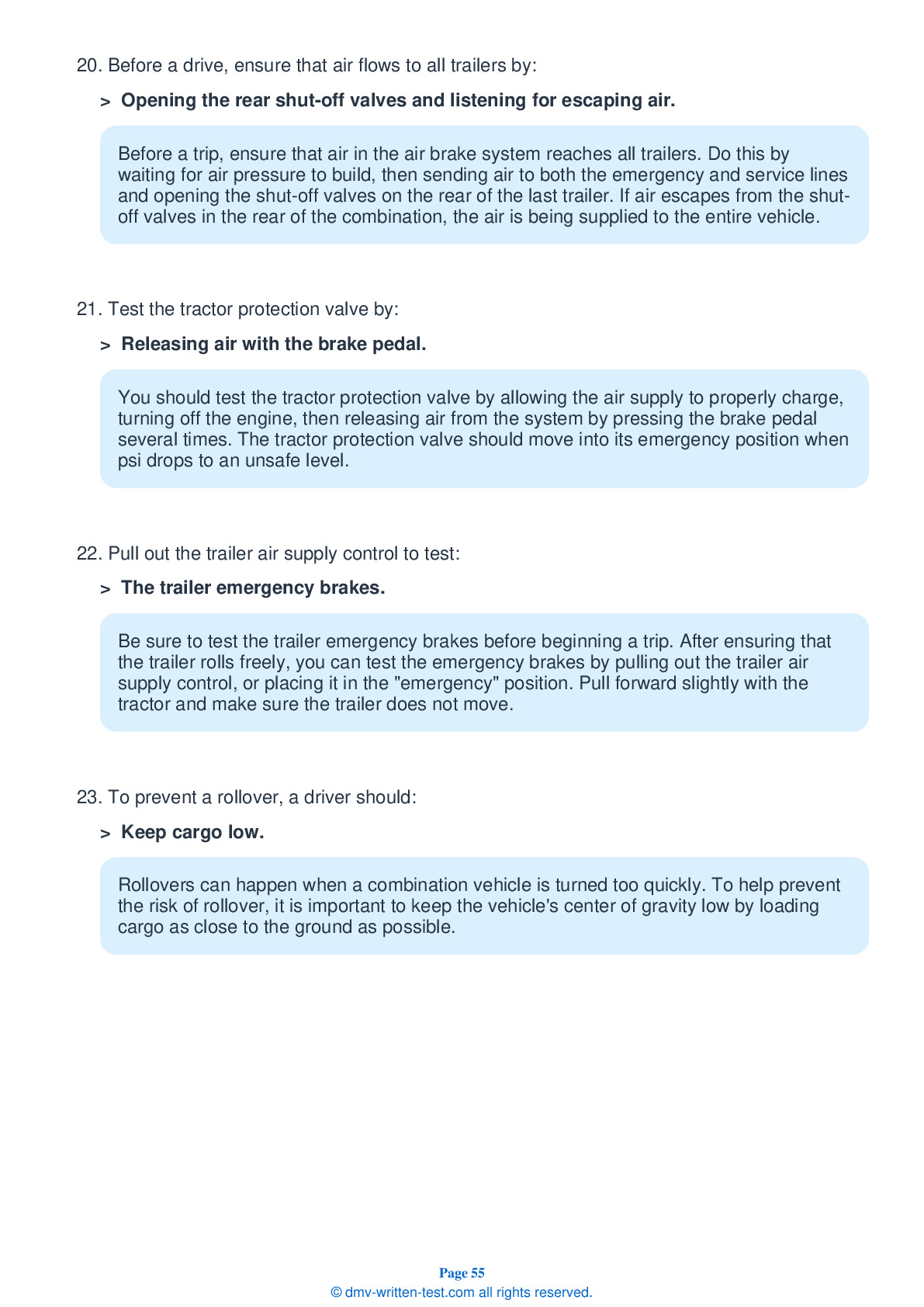Combination
All applicants who are applying for a Class A CDL should be prepared to take the Combination test. This test covers information found in Section 6 of the Minnesota Commercial Driver's Manual. Section 6 provides the information needed to safely operate tractor-trailers, doubles, triples, and straight trucks with trailers. The test is made up of 20 multiple-choice questions, and applicants will need to correctly answer a minimum of 16 questions to pass. The Combination test is not a replacement for the Double/Triple endorsement test.
Number of Question
Passing Score
8. One function of the emergency air line is to:
Explanation
The emergency air line (also known as the supply line) has two functions. The first is to supply air to the trailer air tanks, and the second is to control the emergency brakes on combination vehicles.
9. When uncoupling a trailer, landing gear should be:
Explanation
Landing gear, or trailer supports, should always be completely raised before a vehicle is driven. When uncoupling, landing gear should be lowered to make firm contact with the ground. If a trailer is loaded when it is being uncoupled, you should lower the landing gear and turn the crank a few additional times to remove some weight from the trailer.
10. If you are backing and become unsure about your path of travel, you should:
Explanation
If you are unsure of your path while you are driving in reverse, you should stop, exit the vehicle, and recheck your path of travel.
11. If you cannot reverse your trailer in a straight path, you should:
Explanation
If you need to back your trailer but cannot back up in a straight path, you should back on a curved path toward the driver's side of the vehicle. This will allow you the best possible visibility while backing.
12. If the emergency air line loses pressure:
Explanation
The emergency air line controls the emergency brakes on a combination vehicle. A loss of air pressure in the emergency line will cause the emergency trailer brakes to activate.
13. If you need to back your trailer but cannot back up in a straight path, you should:
Explanation
If you need to back your trailer but cannot back up in a straight path, you should back on a curved path toward the driver's side of the vehicle. This will permit you the best possible visibility while backing.
14. When driving a trailer with ABS, you should:
Explanation




